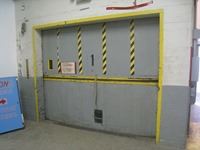Cranes
Cranes are devices belonging to the crane-transport group. They are designed for fast horizontal and/or vertical movement of loads, people or animals over short distances. Cranes are the most popular materials handling equipment. In order to operate cranes, it is necessary to hold the relevant licence which is granted by the Office of Technical Inspection.
In addition, cranes are some of the first devices built by man. They have been used in lifting and carrying loads for centuries. The simplest devices are the so-called simple levers, cranes and well turnstiles. In addition to these, more sophisticated lifting devices are used in many industries, including construction sites. Lifts also include common lifts.
The classification of cranes is not uniform. According to Polish Standard the following types are distinguished:
- Trawlers - are winches, winches, and capstans that are hand or motor driven, constructed with chain or rope tendons and hooks or grippers
- gantry cranes - gantry cranes, overhead travelling cranes or suspended cranes operating on a specific travel path and lifting and lowering heights dependent on the width of the bridge
- cranes - also called cranes, they are used on construction sites as tower cranes, port cranes and mobile cranes, including those on cars
- stacker cranes - designed for stacking and transporting materials mainly in warehouses
- hoists - designed for the vertical lifting of objects, for example, lifts
- goods hoists - consisting of a carrier on sloping rails and rope or chain ties
- Linotor cranes - similar in construction to cableways, consisting of trolleys on carrying ropes placed between towers



































